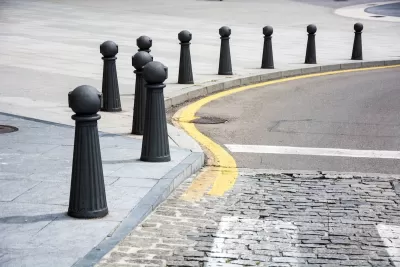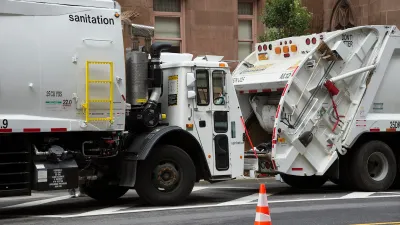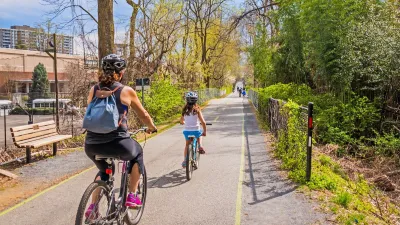Solid barriers, like the dormant ones in New Orleans, are commonly used to improve road safety in Europe. Why not here?

In an article for MinnPost, Bill Lindeke describes how simple yet effective solid bollards can help save lives — both in attacks like the one in New Orleans and in everyday occurrences.
According to Lindeke, “The standard bollard costs around $700 to manufacture and install (at least according to one estimate). That’s very affordable for a modern capital expense, which is probably one reason why they’re common in many European cities.” Retractable bollards are more expensive and require maintenance. Flexible delineators, the bollard’s less robust cousins, can provide traffic calming and clarity but do little to offer physical protection.
“Compared to anything you’ll find in a public works budget, in the right context they represent an amazing investment payoff for traffic calming and safety.” The value of bollards seems well understood by the private sector, Lindeke notes. “Companies that seem to know the actuarial value of their infrastructure deploy them more literally than urban planners.”
With vehicles growing larger and more dangerous, Lindeke writes that bollards would dramatically improve safety near bus stops, schools, and other populated public places. Using more bollards could also have the side effect of encouraging more street festivals and events — “important in an era where public gatherings are disappearing.”
FULL STORY: How the oft-forgotten urban pawn, the lowly bollard, can save lives

Trump Administration Could Effectively End Housing Voucher Program
Federal officials are eyeing major cuts to the Section 8 program that helps millions of low-income households pay rent.

Planetizen Federal Action Tracker
A weekly monitor of how Trump’s orders and actions are impacting planners and planning in America.

The 120 Year Old Tiny Home Villages That Sheltered San Francisco’s Earthquake Refugees
More than a century ago, San Francisco mobilized to house thousands of residents displaced by the 1906 earthquake. Could their strategy offer a model for the present?

HSR Reaches Key Settlement in Northern California City
The state’s high-speed rail authority reached an agreement with Millbrae, a key city on the train’s proposed route to San Francisco.

Washington State Legislature Passes Parking Reform Bill
A bill that would limit parking requirements for new developments is headed to the governor’s desk.

Missouri Law Would Ban Protections for Housing Voucher Users
A state law seeks to overturn source-of-income discrimination bans passed by several Missouri cities.
Urban Design for Planners 1: Software Tools
This six-course series explores essential urban design concepts using open source software and equips planners with the tools they need to participate fully in the urban design process.
Planning for Universal Design
Learn the tools for implementing Universal Design in planning regulations.
Ada County Highway District
Clanton & Associates, Inc.
Jessamine County Fiscal Court
Institute for Housing and Urban Development Studies (IHS)
City of Grandview
Harvard GSD Executive Education
Toledo-Lucas County Plan Commissions
Salt Lake City
NYU Wagner Graduate School of Public Service





























